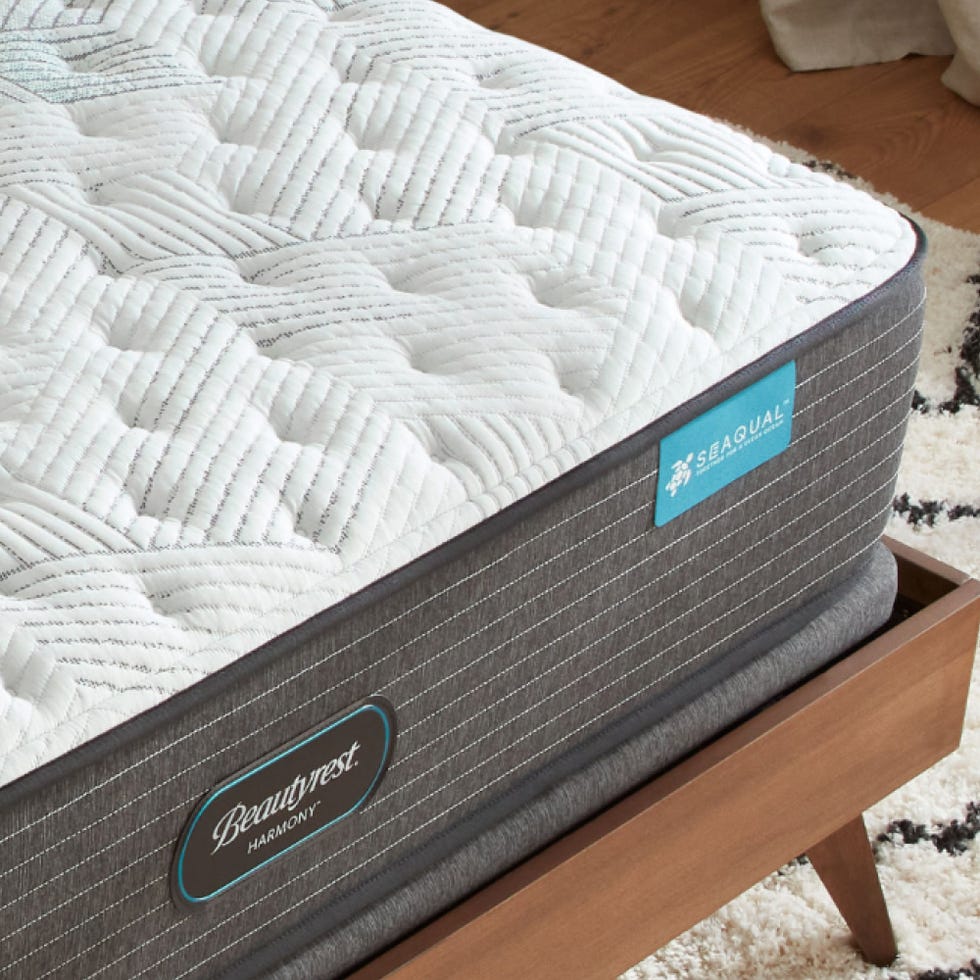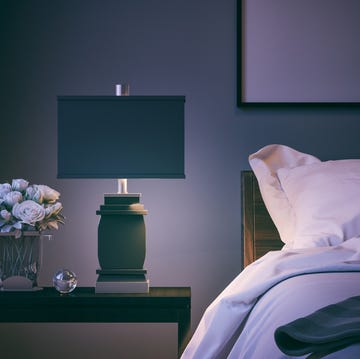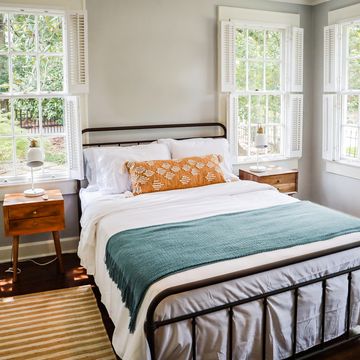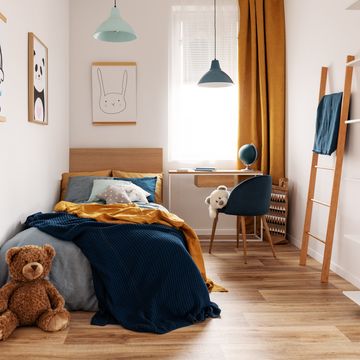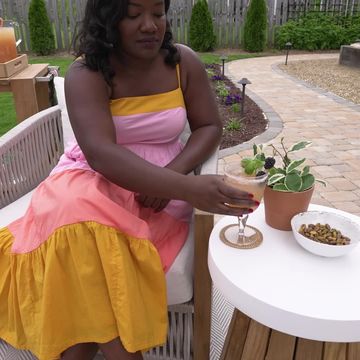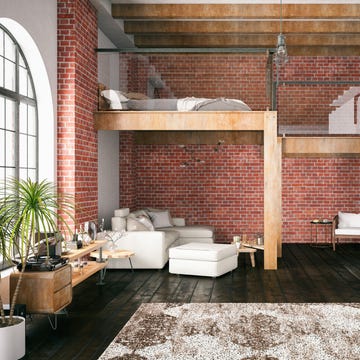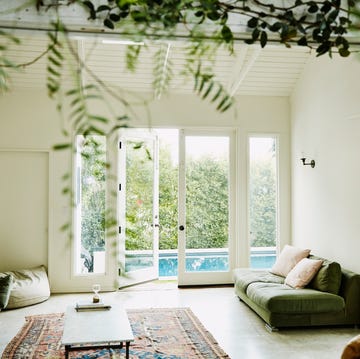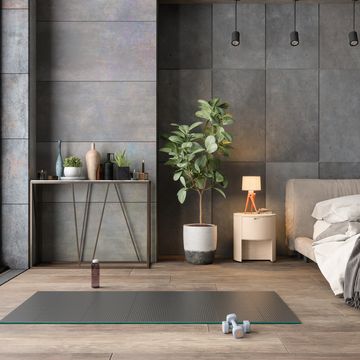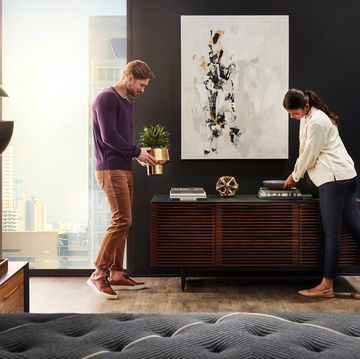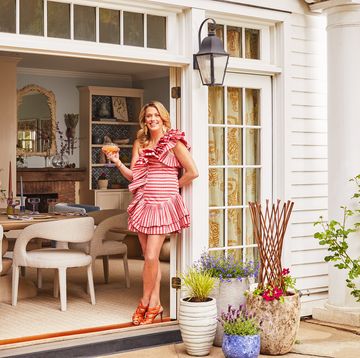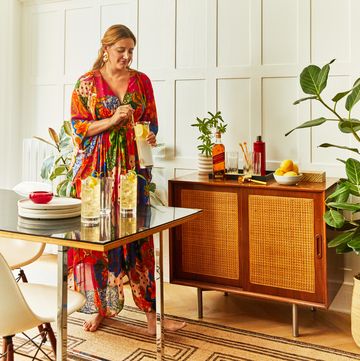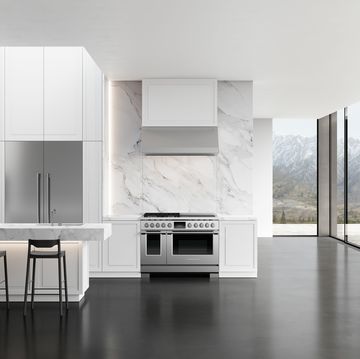Transitioning a toddler from a crib to a kid's bed can feel like an unwelcome trip back in time. The change in environment, coupled with the newfound independence ("Look, Mom! No crib rails!"), can completely disrupt any established bedtime routine. Given how often you hear those little feet approach your bedside at midnight, or have your streaming session interrupted after lights-out, you might be wondering if anyone is ever going to get a full night's sleep again. Wasn't sleep deprivation supposed to end with the infant stage?
Luckily, like so many parenting puzzles, this is just a phase. And one way to make it as short as possible is to design a bedroom that your child will love spending time in. We asked designers for their secrets to balancing good sleep hygiene and toddler-approved decor—and these are their top five tips.
Involve Them in the Process
One effective approach is to include your (likely very opinionated) toddler in the project. "If you can grab the interest of a child in the design of their space, they will feel heard, and often take pride in what 'they' have created," says Houston-based interior designer Kayla Jacks. "They'll want to spend more time there simply because it represents them and everything they love!"
Don't worry—you are still permitted to hone their creative process a little. "It doesn't necessarily mean adding cartoon characters everywhere," says New York-based interior designer Emma Beryl. "It can be just including colors and textures that the toddler likes." By incorporating elements that reflect their budding personalities, like favorite hues, animals, or themes, you can create a space that feels safe and special, making it more likely they'll want to spend the whole night in their little sanctuary.
Choose a Mattress That's Good for Them
While most kids probably can't tell the difference between one mattress and another, there are some guidelines you can follow for their benefit. "I would opt for a medium-firm mattress," says Beryl. "It provides more support for their growing bodies." Jacks concurs: "We want it comfy and inviting for little ones, but not so plush that they can’t easily get in and out of bed."
Beautyrest carries firm and medium mattresses in various sizes and price points. Its Harmony collection is a smart choice for kids as the mattresses use CertiPUR-US-certified foams made without formaldehyde, flame retardants, prohibited phthalates, and heavy metals. They also meet low-VOC (volatile organic compounds, potentially harmful chemicals that evaporate easily at room temperature) standards for indoor air quality. If you've ever ordered a mattress that you couldn't sleep on for a week thanks to off-gassing, you get why this is a big deal.
The Harmony mattress cover also has built-in antimicrobial protection, which keeps it fresh and free from odor-causing bacteria. In addition, Beautyrest has partnered on this line with Seaqual, a sustainable-fabric technology company that is a leader in ocean plastic recovery and upcycling efforts.
Let the Bed Frame Promote Independence
Beryl recommends "a low-profile, upholstered platform bed that's not too high off the ground, for their little legs—something that can evolve with their style and tastes as they get older." The upholstery will also safeguard against bedtime boo-boos, "since your kid will be climbing all over everything," she adds.
Jacks, for her part, is a fan of bed frames that sit even lower to the ground at this age range. "I love using floor beds and trundle beds when the space allows," she says. "It's fun creating a room for a toddler that makes them feel more independent."
Contain (and Conceal) Their Toys
It might even help your little one wind down faster. "Toddlers need a space that they will associate with calmness and sleep, not playtime," Beryl says. And with everything stowed away at bedtime, she notes, "They won't want to play when they should be going to sleep." Jacks recommends making cleanup a seamless part of the nightly routine via cute storage bins, baskets, and cabinets with cubbies, which toddlers can use to "tuck their favorite toys into bed."
Promote Good Sleep Hygiene With Small Accents
Feel like you've tried everything, yet your toddler still refuses to sleep in their bed? Both designers recommend going back to basics—the right lighting, for example. "I personally swear by a sleep-training night light," Jacks says. "It needs to look great on a shelf (I can't help myself!) and it'll also instill that the fun colors indicate when to get ready for bed when to go to sleep, and when to get out of bed."
Beryl also recommends a sound machine to "block out car honks and sirens or the noise of parents on the other side of the door." If your child is especially sensitive to light, she adds, try blackout curtains or shades. "Especially in the summer months," she says, "when you really don't want them waking up with the sun."


